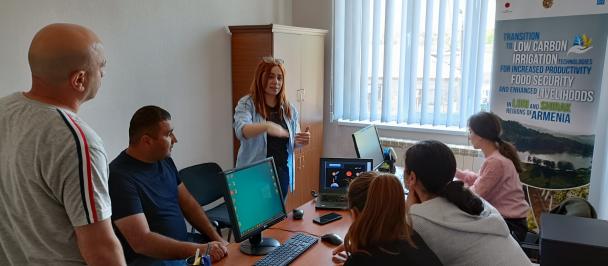Combating the Crisis of Information Pollution: Recognizing and Preventing the Spread of Harmful Information
February 5, 2024

We are living in an age of unprecedented information access. A click, a swipe, or a scroll can open a constant stream of news, articles and social media posts competing for our attention. However, within this ocean of data lies a hidden danger: information pollution.
As we experienced during the pandemic and now with the multiple crises in the region, information pollution - the spread of false, misleading, manipulated and otherwise harmful information - is threatening our ability to make informed decisions, participate in democratic processes, and contribute to the building of inclusive, peaceful and just societies.
You’ve likely came across information pollution, maybe even without realizing it. They are disguised as funny memes, viral videos, or trending hashtags. They might not always grab your attention, but they can quietly shape opinions, instigate conflict, and erode trust in reliable information.
Being able to recognize different forms of information pollution is the first step to preventing them from spreading further. You, along with your community, play a crucial role in curbing the spread of harmful rhetoric and preventing its escalation.
Take the short quiz to test your skills in identifying false information and download the guides below to learn how to respond to mis-dis-mal information and hate speech in a scientific and proven way.
Unsure if it's true? Use this checklist and share them with your friends
- Source Verification: Have you verified the source of the information? Reliable information should come from trustworthy and reputable sources.
- Fact-checking: Have you checked if the information is accurate and true? Use factchecking websites to confirm the validity of the content.
- Emotional Check: Does the post trigger strong emotions? Posts designed to incite anger, fear, or hatred may be forms of dangerous speech.
- Stereotype and Bias Check: Does the content promote stereotypes or biases against certain groups or individuals?
- Harm Check: Could the content potentially cause harm or distress to others? This could be physical, emotional, or psychological harm.
- Value Check: Does sharing this content align with your values and the values of respect, peace, and understanding that you want to promote?
- Constructive Check: Does the content contribute to a positive and constructive dialogue? If not, consider refraining from sharing it.
- Countercheck: If the content is harmful but still needs to be shared (for awareness, for instance), are you providing counterspeech? Make sure to provide context, correct false information, and promote understanding in your counter-message. Be careful not to inadvertently repeat the myth when you are correcting it.

 Locations
Locations




